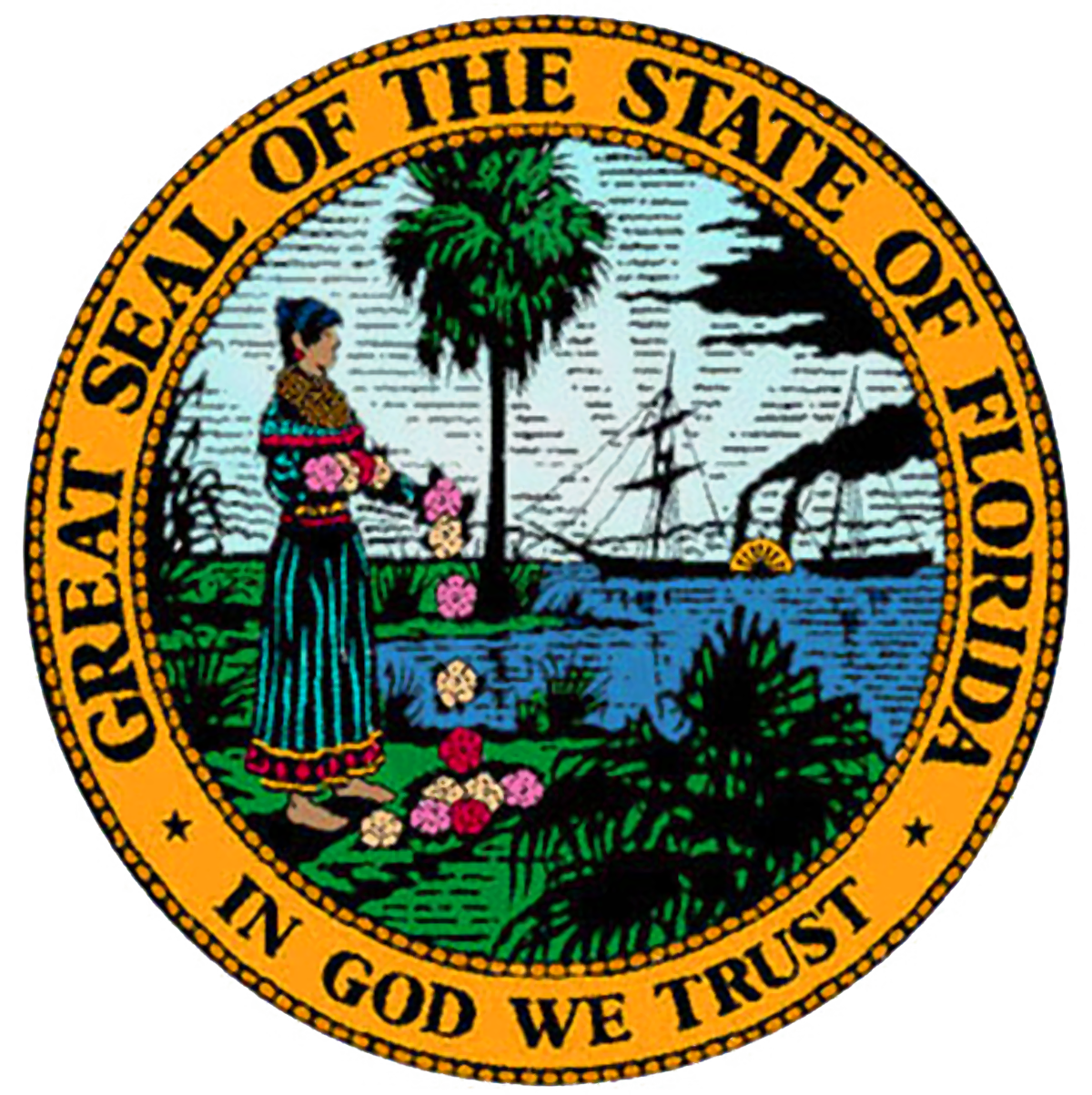The Florida logo represents more than just a state emblem; it encapsulates the essence of Florida's diverse culture, vibrant history, and the natural beauty that attracts millions of visitors each year. This logo serves various purposes, from branding tourism to representing state pride. In this article, we will explore the history, design elements, and significance of the Florida logo, while also examining its impact on tourism and local identity.
The Florida logo is a visual representation that resonates with both residents and visitors alike. It is essential to understand the foundational elements that make this logo iconic. Through this exploration, we will delve into the design principles that guide logo creation, the symbolism embedded within the Florida logo, and how it aligns with the state’s overall branding strategy. Additionally, we will discuss the role of the logo in promoting tourism and fostering a sense of community among Floridians.
As we navigate through this comprehensive guide, we will highlight key aspects such as the historical context of the logo’s creation, the various iterations it has undergone, and the current trends in logo design that may influence its future. By the end of this article, you will have a deeper appreciation for the Florida logo and its role in shaping the identity of the Sunshine State.
Table of Contents
- History of the Florida Logo
- Design Elements of the Florida Logo
- Symbolism Behind the Florida Logo
- Impact of the Florida Logo on Tourism
- Fostering Local Identity through the Florida Logo
- Evolution of the Florida Logo
- Current Trends in Logo Design
- Conclusion
History of the Florida Logo
The Florida logo has its roots in the early 20th century, when the state began to establish a more cohesive identity. Initially, various symbols representing Florida—such as the orange blossom and the palm tree—were used independently. However, with the rise of tourism in the post-World War II era, the need for a unified logo became paramount.
In 1961, the Florida state government officially adopted a logo that would encapsulate the state’s identity. This logo featured elements that represented Florida’s natural beauty and cultural diversity. Over the years, the logo has been updated to reflect changing societal values and branding strategies, yet its core elements have remained consistent.
Key Milestones in the Logo’s Development
- 1961: Introduction of the original Florida logo.
- 1985: First major redesign to modernize the logo.
- 2006: Introduction of the current iteration focusing on sustainability and tourism.
Design Elements of the Florida Logo
The design of the Florida logo incorporates various elements that are both visually appealing and representative of the state’s identity. Key components include:
- Color Palette: The use of vibrant colors such as orange and blue symbolizes Florida’s sunny climate and beautiful beaches.
- Typography: The font used in the logo is bold and easy to read, conveying a sense of welcoming and friendliness.
- Iconography: The inclusion of iconic symbols like palm trees and the sun reflects Florida's natural landscape.
Symbolism Behind the Florida Logo
Every element of the Florida logo carries significant meaning. The symbols used are carefully chosen to reflect the state’s unique characteristics:
- Sunshine: Represents Florida's nickname, the "Sunshine State," and its year-round warm climate.
- Palm Trees: Symbolizes the tropical landscape and the outdoor lifestyle enjoyed by residents and tourists.
- Orange Blossom: Reflects Florida's agricultural heritage, particularly its citrus industry.
Impact of the Florida Logo on Tourism
The Florida logo plays a crucial role in the state’s tourism marketing efforts. It serves as the face of promotional campaigns, both domestically and internationally. The recognizable logo helps create a consistent brand image that resonates with potential visitors.
Statistics show that effective branding can significantly influence travel decisions. According to a study by the Florida Tourism Industry, more than 90% of first-time visitors can recall seeing the Florida logo before their trip, highlighting its effectiveness in marketing.
Fostering Local Identity through the Florida Logo
Beyond its role in tourism, the Florida logo fosters a sense of local identity and pride among residents. It serves as a unifying symbol that brings communities together. Local businesses often incorporate the logo into their branding, reinforcing the connection to the state and its values.
Community events and festivals frequently use the logo as part of their branding efforts, creating a sense of belonging and shared identity among Floridians.
Evolution of the Florida Logo
As society and technology evolve, so too does the Florida logo. The logo has undergone several redesigns to remain relevant and appealing to contemporary audiences. The iterative process involves incorporating feedback from residents and stakeholders to ensure the logo reflects the current values and aspirations of the state.
Modern design trends, such as minimalism and sustainability, influence the ongoing evolution of the logo, ensuring it remains a symbol of pride for all Floridians.
Current Trends in Logo Design
Current trends in logo design emphasize simplicity, versatility, and adaptability across various platforms. The Florida logo has embraced these trends by adopting a cleaner design that can be easily recognized in both digital and print formats.
Additionally, the growing emphasis on sustainability has encouraged the integration of eco-friendly elements in the logo's design philosophy, aligning with the state's commitment to environmental conservation.
Conclusion
In summary, the Florida logo is a powerful symbol that encapsulates the state's identity, history, and culture. Its design elements, symbolism, and impact on tourism and local pride contribute to its significance. As the logo continues to evolve, it remains a vital part of Florida's branding strategy and a cherished emblem for its residents.
We encourage you to share your thoughts on the Florida logo in the comments section below. If you found this article informative, feel free to share it with friends and family or explore more articles on our site to learn about other fascinating aspects of Florida’s culture and identity.
Thank you for reading, and we look forward to welcoming you back for more engaging content!


